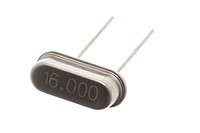
Photo from wikipedia
With the advent of relaxor single crystal materials, such as lead indium niobate-lead magnesium niobate-lead titanate (PIN-PMN-PT) and lead magnesium niobate-lead titanate (PMN-PT), it was discovered that the highly oriented… Click to show full abstract
With the advent of relaxor single crystal materials, such as lead indium niobate-lead magnesium niobate-lead titanate (PIN-PMN-PT) and lead magnesium niobate-lead titanate (PMN-PT), it was discovered that the highly oriented crystal structure of the materials leads to large values of dielectric and piezoelectric properties favorable to acoustic applications. When utilized in transduction devices, single crystal materials have demonstrated better acoustic performances compared to traditional designs. However, during construction of single crystal transducers, a capacitance loss is measured after mechanically bonding the crystal to a stiff backing material. The lower capacitance suggests a decrease in the effective permittivity, decreasing favorable piezoelectric constants for acoustic performance. In this study, the loss in effective permittivity was modeled using a commercial finite element analysis software. We present simulations used to demonstrate the loss in effective permittivity and compare with experimental measurements. Additionally, finite element simulations of several design considerations that can be utilized by transducer designers to minimize the loss in the effective permittivity are presented.With the advent of relaxor single crystal materials, such as lead indium niobate-lead magnesium niobate-lead titanate (PIN-PMN-PT) and lead magnesium niobate-lead titanate (PMN-PT), it was discovered that the highly oriented crystal structure of the materials leads to large values of dielectric and piezoelectric properties favorable to acoustic applications. When utilized in transduction devices, single crystal materials have demonstrated better acoustic performances compared to traditional designs. However, during construction of single crystal transducers, a capacitance loss is measured after mechanically bonding the crystal to a stiff backing material. The lower capacitance suggests a decrease in the effective permittivity, decreasing favorable piezoelectric constants for acoustic performance. In this study, the loss in effective permittivity was modeled using a commercial finite element analysis software. We present simulations used to demonstrate the loss in effective permittivity and compare with ex...
Journal Title: Journal of the Acoustical Society of America
Year Published: 2018
Link to full text (if available)
Share on Social Media: Sign Up to like & get
recommendations!